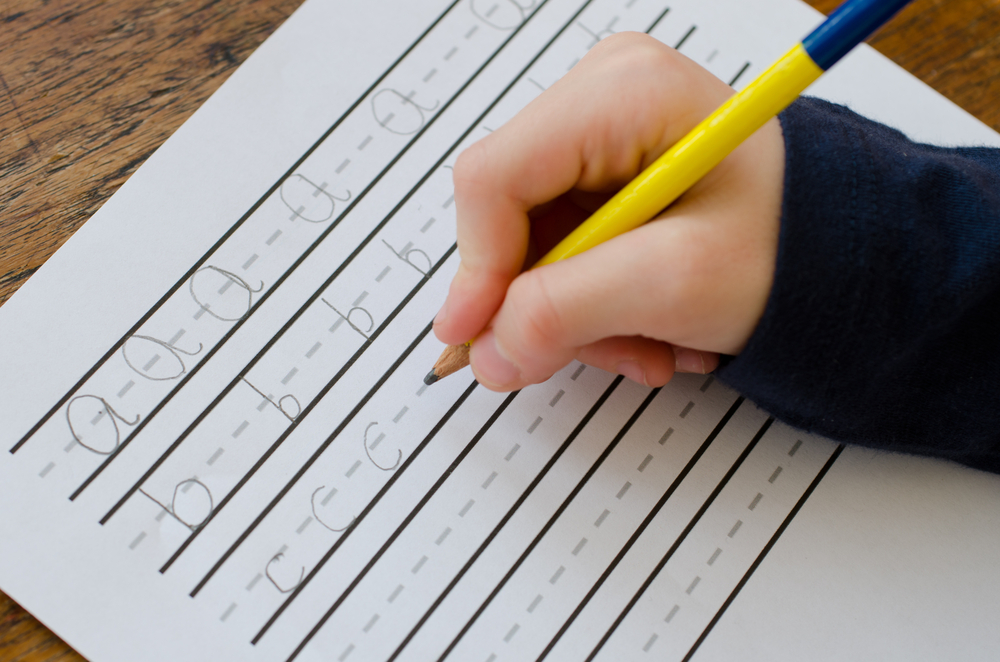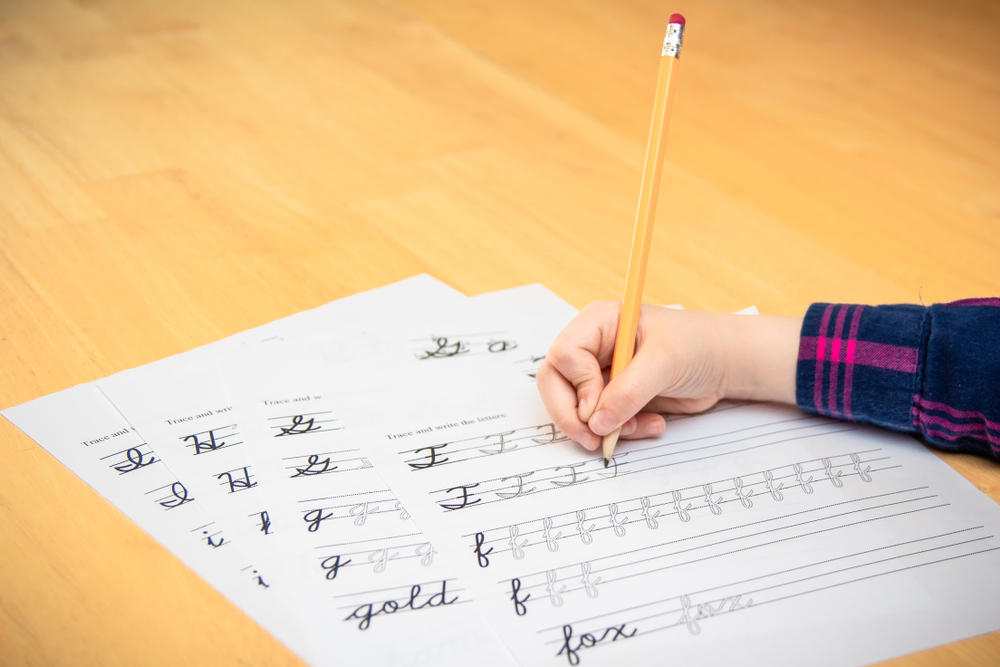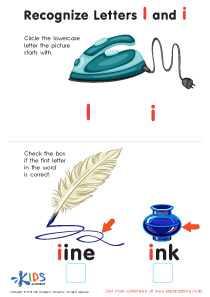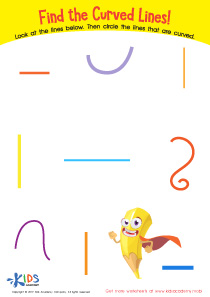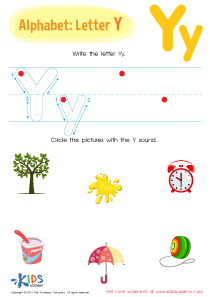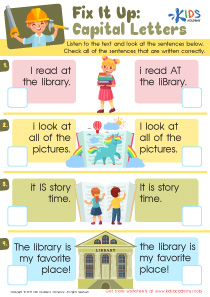Hand-eye Coordination Cursive Alphabet Worksheets for Ages 5-8
6 filtered results
-
From - To
Enhance your child's hand-eye coordination while mastering cursive writing with our engaging Cursive Alphabet Worksheets for ages 5-8. These thoughtfully designed resources combine exciting exercises that promote fine motor skills and writing proficiency. Each worksheet features visually appealing letters and fun activities that encourage intentional tracing and practice, designed specifically to captivate young learners. As children connect the movements of their hands with visual cues, they develop essential coordination skills critical for writing and overall dexterity. Perfect for at-home learning or classroom use, these worksheets ensure that learning cursive is both effective and enjoyable. Boost your child's confidence in writing today!
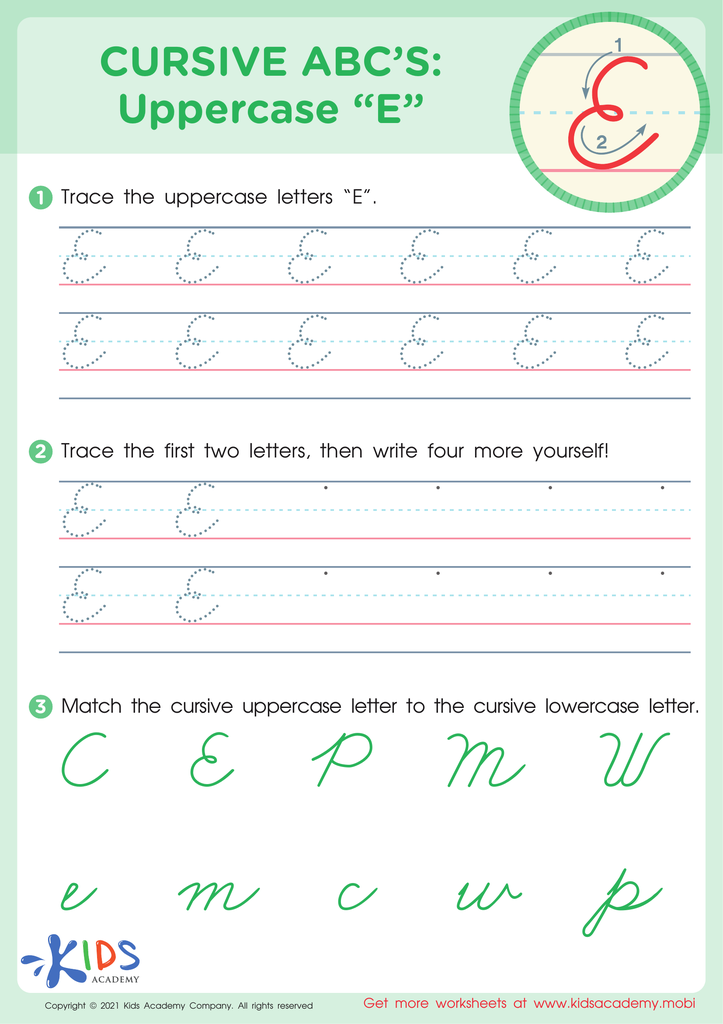

Cursive ABCs: Uppercase E
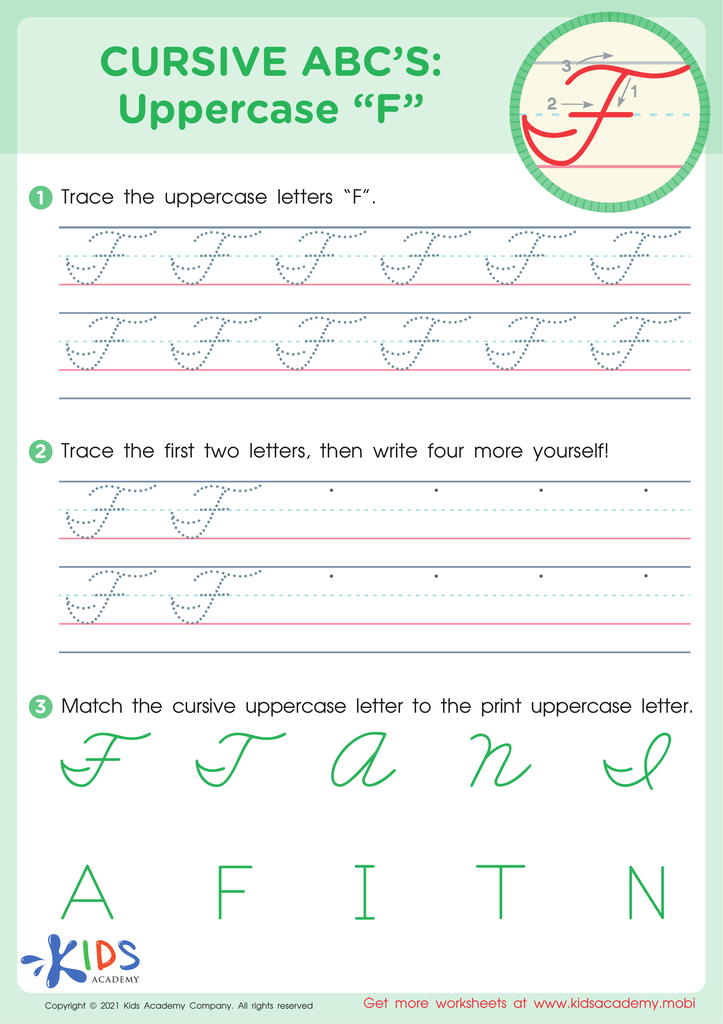

Cursive ABCs: Uppercase F
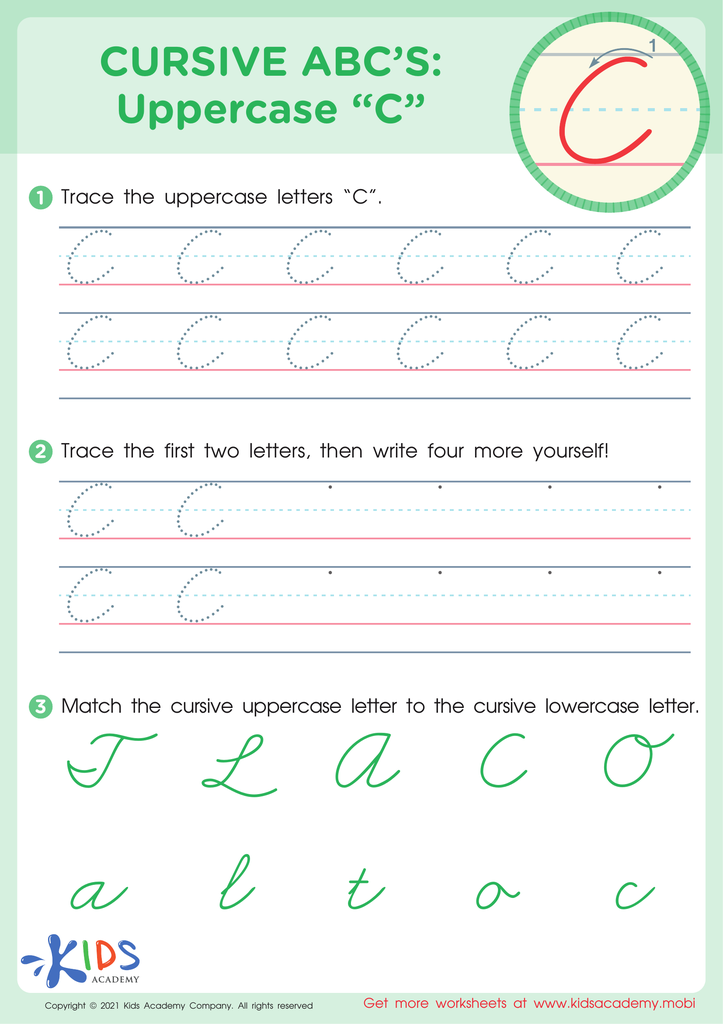

Cursive ABCs: Uppercase C
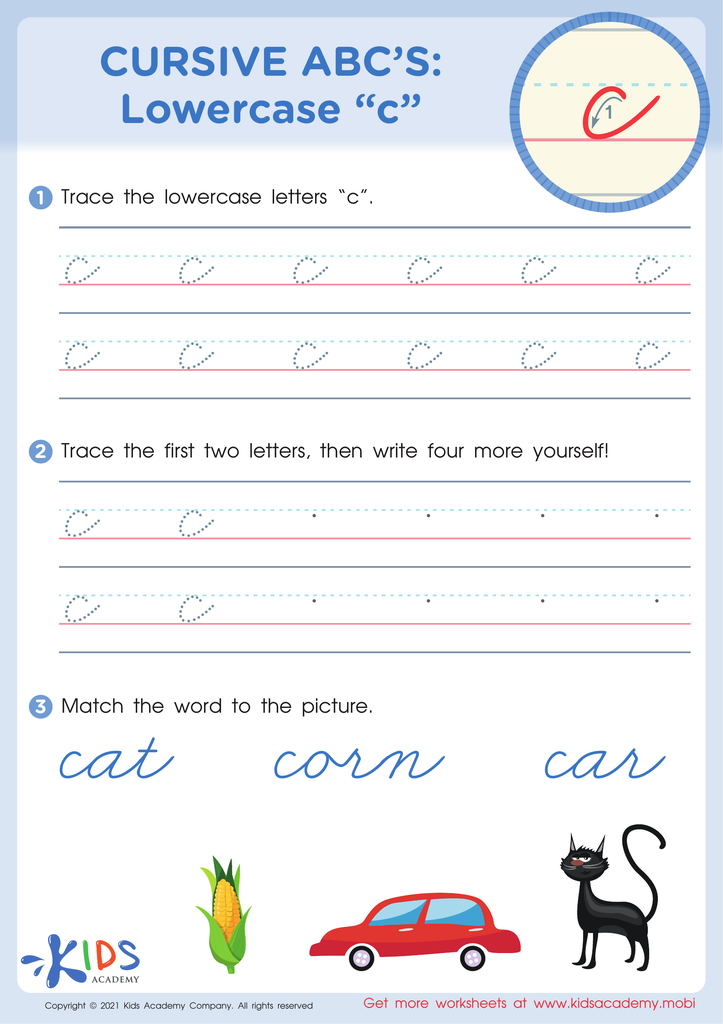

Cursive ABCs: Lowercase c
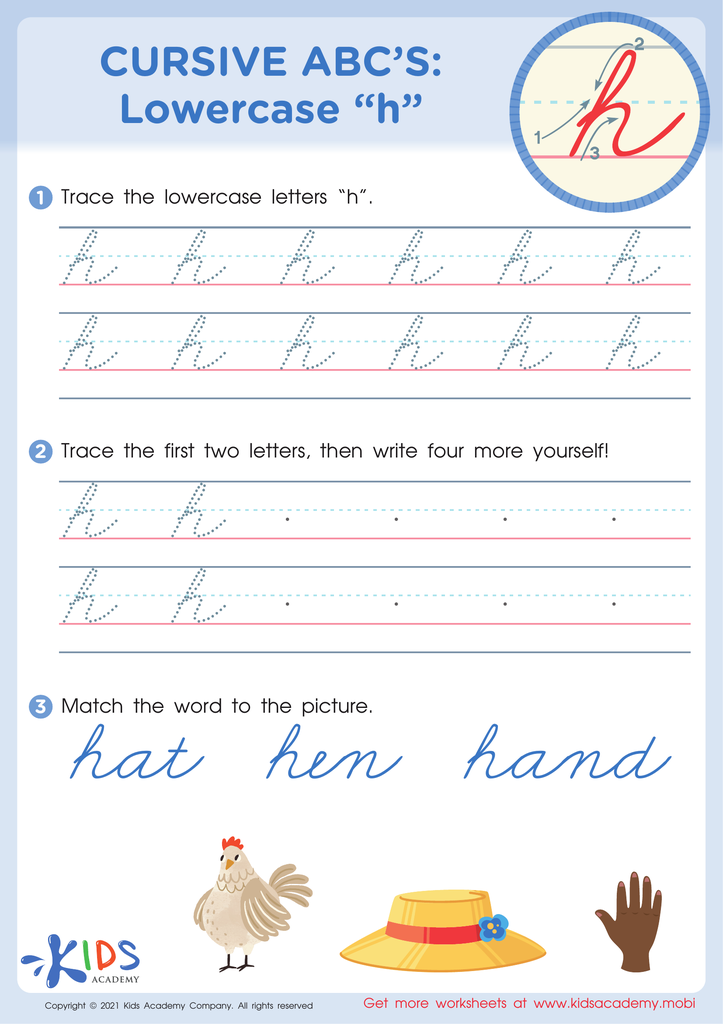

Cursive ABCs: Lowercase h
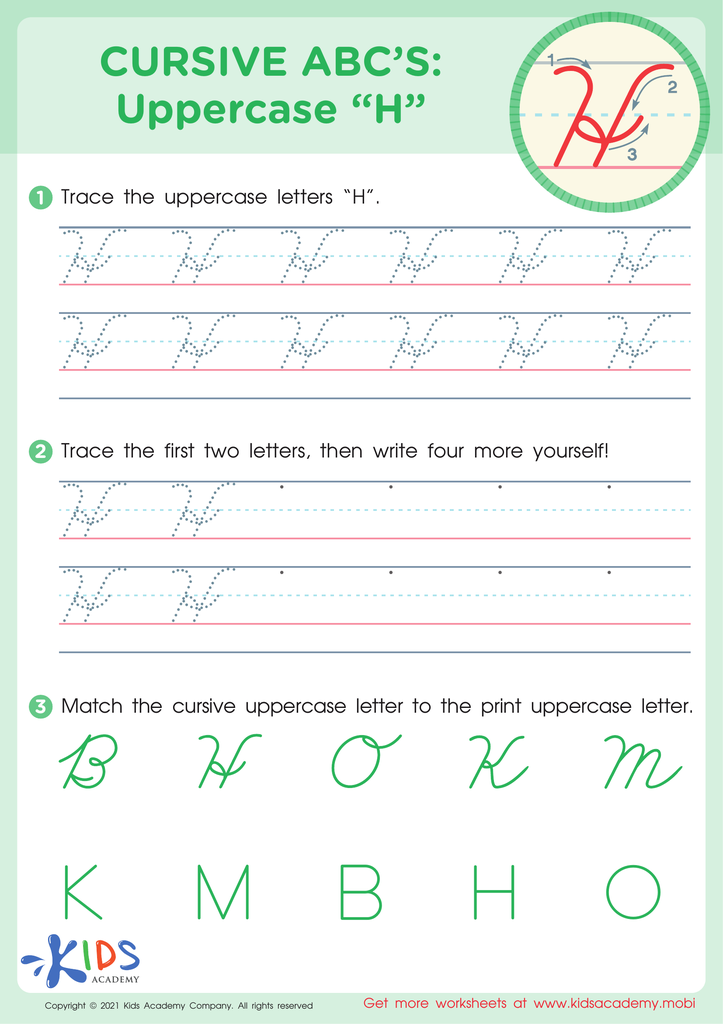

Cursive ABCs: Uppercase H
Hand-eye coordination is a fundamental skill that plays a crucial role in a child's development, particularly in learning cursive writing for ages 5-8. This developmental stage is marked by the significant growth of fine motor skills, which directly impact a child's ability to write smoothly and efficiently. Cursive writing requires the integration of visual input with physical movement, enhancing this coordination.
Parents and teachers should care about hand-eye coordination because it affects not just writing, but also a child's overall academic performance. Well-developed hand-eye coordination allows children to combine visual guidance with motor skills, making tasks like reading, drawing, and participating in sports easier. Furthermore, cursive writing encourages fluidity in letter formation, which can boost confidence in handwriting and enhance cognitive processing. Improved handwriting has been linked to better academic outcomes.
By fostering hand-eye coordination through cursive practice, parents and educators can set children up for success. This practice also encourages patience and diligence, instilling positive habits that will benefit them in various life skills beyond academics. Overall, prioritizing hand-eye coordination is an essential investment in a child's holistic development during critical early learning years.




